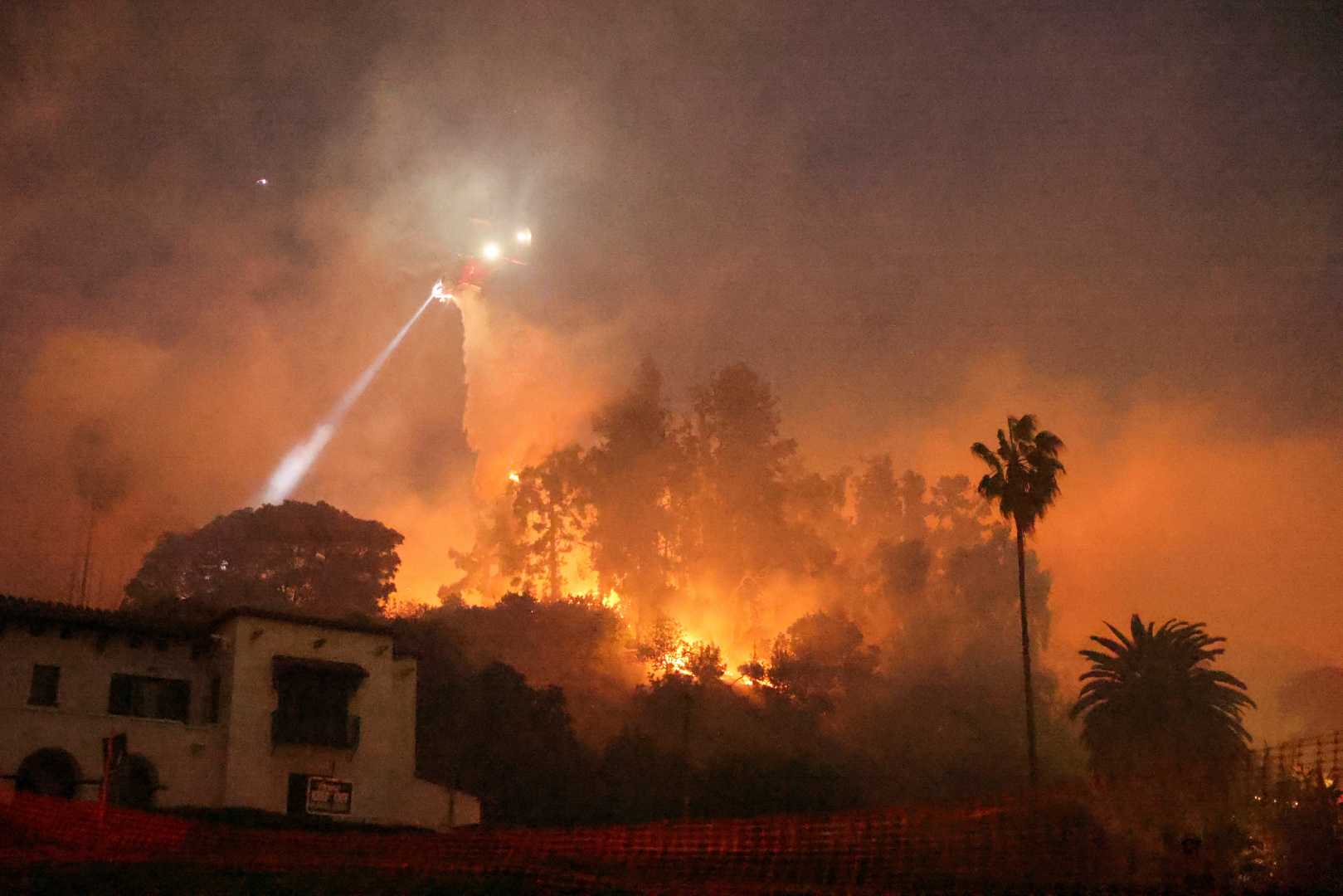News
California Wildfires: Devastation and Climate Change Concerns

LOS ANGELES, Calif. — Wildfires raging across Los Angeles since January 7, 2025, have left at least 10 people dead, destroyed over 5,000 homes and businesses, and forced hundreds of thousands to evacuate. The fires, fueled by strong Santa Ana winds and exacerbated by climate change, have created apocalyptic scenes of smoke and ash, with damages expected to exceed $135 billion.
Nguyễn Hoàng Lan, a student at El Camino College, described the aftermath as “like the end of the world.” She recounted how the sky turned black with smoke, and ash covered cars and gardens. “The air was so thick with smoke that I couldn’t stop coughing, and my eyes burned,” Lan said. The fires, including the Pacific Palisades, Eaton, and Hurst blazes, have merged into a massive inferno covering over 11,600 hectares.
President Joe Biden called the wildfires “the fastest-spreading and most devastating in California‘s history.” Over 180,000 residents have been evacuated, with 200,000 more under evacuation warnings. The fires have been fueled by Santa Ana winds reaching speeds of up to 160 km/h, making containment efforts nearly impossible.
Nguyễn Hoàng Thạch Thảo, a legal professional living in Westwood, said the air quality in her area had deteriorated significantly. “Schools are closed, and authorities are advising people to wear masks and stay indoors,” she said. Thảo eventually fled to Laguna Beach to escape the hazardous conditions.
Hoài Anh, a graduate student at UC Riverside, reported that the Air Quality Index (AQI) in Rosemead had spiked to 154, far above the normal level of 30. Power outages have further complicated the situation for residents.
Firefighters have faced immense challenges due to the dry, windy conditions. While winds have slightly subsided, allowing helicopters to assist in firefighting efforts, the situation remains critical. Phuc Ngo, an engineer in Orange County, noted that even from a distance, the massive plumes of smoke were visible. “This is the first time I’ve seen such large-scale winter wildfires in Southern California,” he said.
The economic impact is staggering, with property damage estimated at $52-57 billion. Many affected areas include high-value real estate, with homes averaging over $2 million each. Community efforts have sprung up to support victims, with online fundraisers and donations of food, clothing, and medical supplies.
Scientists attribute the intensity of the fires to climate change, which has extended California’s wildfire season year-round. Debbie Collins, a Los Angeles store owner, echoed these concerns: “Climate change is affecting everything. The world is in a dire state, and we need to act more decisively.”
As firefighters continue to battle the blazes, the focus remains on recovery and addressing the long-term implications of climate change. The Los Angeles County Sheriff’s Office has warned of potential looting in evacuated areas, with 20 arrests made so far. The fires serve as a stark reminder of the increasing frequency and severity of natural disasters in a warming world.












